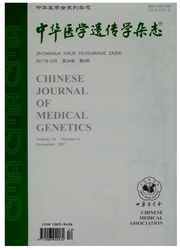

 中文摘要:
中文摘要:
原发性震颤(essentialtremor,ET)是最常见的运动障碍疾病之一,其临床表现不仅包括典型的动作或姿势性震颧,还包括一些非运动症状如认知障碍、睡眠障碍及嗅觉障碍等。ET的病因及发病机制目前尚不明确,大约60%的患者有家族史。遗传因素在ET的发病中起着重要的作用。研究者已在ET患病家系中定位了ETM1~3共3个区间。随着全基因组关联分析以及下一代测序技术的发展,越来越多的ET致病基因如FUS、HTRA2、TENM4、NOS3等及易感基因如LINGO、SLCIA2、GABA等被陆续发现。本文就ET遗传学的研究进展做一综述。
 英文摘要:
英文摘要:
Essential tremor (ET) is one of the most common movement disorders. Its clinical manifestations not only include typical kinetic and/or postural tremors, but also other non-motor symptoms such as cognitive dysfunction, sleep disturbance, and dysosmia. The exact etiology and pathogenesis of ET is still unknown. Approximately 60~ of ET patients have a family history, and genetic factor plays an important role in the onset of the disease. Researchers have so far identified 3 genetic loci (ETM 1-3) through family studies, and proposed additional causative genes such as FUS, HTRA2, TENM4, NOS3 and susceptibility genes such as LINGO, SLC1A2, and GABA. This review focuses on the progress made in genetic research on ET.
 同期刊论文项目
同期刊论文项目
 同项目期刊论文
同项目期刊论文
 期刊信息
期刊信息
